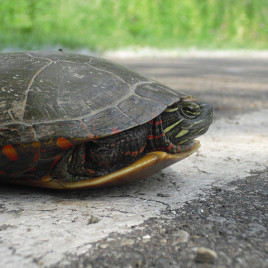A new study shows that high traffic roads in Eastern Ontario have no significant effect on the relative abundance of painted turtles. Researchers compared turtle populations from around 20 ponds, half of which were close to a freeway and the other half of which were as far as possible from any major roads. They found that […]
Launch of a “thermometer for the mind”
A free online brain health test developed by the memory experts at Baycrest Health Sciences can help those aged 50 to 79 assess changes in their memory and determine whether they need to see a doctor. The developers caution that the 20-minute test does not provide a clinical diagnosis, but say it can be a […]
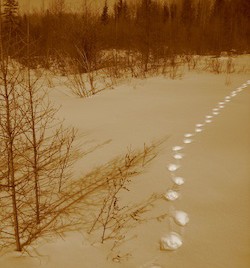
Does counting tracks to estimate animal populations actually work?
A new computer analysis shows that animal tracks can provide an accurate estimate of animal populations in a given area. Biologists often use animal tracks for relative estimates – e.g. more over here than over there – but because tracks can twist and turn, they shy away from using them to get an absolute number of […]

Faire parler les empreintes d’animaux
Une nouvelle analyse informatique montre que les pistes d’animaux peuvent fournir une estimation précise de la population d’animaux dans un territoire donné. Les biologistes utilisent souvent des pistes d’animaux afin d’estimer de manière relative une population par rapport à une autre. Toutefois, puisque les pistes tournent et s’entrecroisent, ils ne pouvaient pas obtenir un estimé […]
Scientists reveal how leukemias resist drugs
Scientists have determined how some leukemia cells resist treatment by current cancer drugs, opening the door to new ways of treating such cancers. The team examined drug-resistant cancer cells in the lab and found that they had higher levels of a family of enzymes called UGT1A as well as another enzyme called GLI1.Together, these enzymes […]
Des chercheurs découvrent comment la leucémie résiste aux médicaments
Des chercheurs ont compris comment les cellules leucémiques résistent aux médicaments contre le cancer, ce qui ouvre la porte à de nouveaux traitements contre ces cancers. Pour ce faire, ils ont étudié des cellules cancéreuses en laboratoire et ont trouvé qu’elles avaient des concentrations plus élevées d’une famille d’enzymes appelée UGT1A et une autre appelée […]
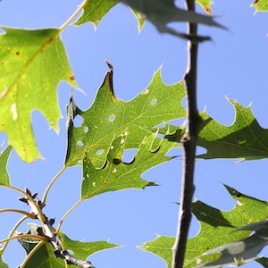
Les feuilles des plantes ne se font pas tant manger que ça
Une nouvelle analyse menée sur plus de 1000 espèces de plantes montre qu’en moyenne seulement 5,3% des feuilles sont mangées par des insectes et des herbivores, soit le tiers des estimations précédentes. Cela signifie que la majorité de l’énergie emmagasinée dans les feuilles par la photosynthèse ne monte pas la chaîne alimentaire, mais est plutôt […]

Plants – what’s eating them?
A new analysis of over 1000 plant species shows that on average, only about 5.3 percent of their leaves are eaten by insects and vertebrate grazers – less than a third of previous estimates. This means that most of the energy captured by photosynthesis doesn’t go ‘up’ the food chain, but instead is passed on […]
Une nouvelle méthode pour détecter les athlètes dopés au xénon
Des chercheurs ont développé une nouvelle méthode capable de détecter du xénon dans des échantillons de sang prélevés chez un athlète jusqu’à 24 heures après que les effets de la substance se fassent sentir. Pendant les jeux Olympiques d’hiver de Sotchi, des rumeurs circulaient comme quoi certains athlètes russes inhalaient du xénon, un gaz noble, […]
New method to detect xenon in athletes’ blood
Researchers have developed a new method that can detect xenon in blood samples from athletes up to 24 hours after the effect of the drug has worn off. During the Winter Olympics in Sochi, rumours spread that some Russian athletes inhaled the noble gas xenon, which studies have shown can stimulate the production of erythropoietin […]
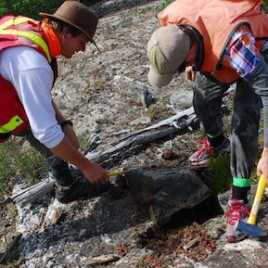
Des roches des Territoires du Nord-Ouest racontent l’origine des continents
Une nouvelle analyse de roches anciennes trouvées dans les Territoires du Nord-Ouest améliore notre compréhension de la formation des premiers continents. Les roches provenant de la croûte continentale sont moins denses que les roches formant la croûte océanique. Toutefois, l’analyse de ces roches continentales vieilles de 4 milliards d’années trouvées au nord de Yellowknife montre […]

Ancient Canadian rocks shed light on first continents
A new analysis of some very old rocks from the Northwest Territories sheds light on how the very first continents formed. Rocks that make up the continental crust are less dense than those in oceanic crust, and today formed mainly in subduction zones, where oceanic crust and water get forced downward under overlapping tectonic plates. […]
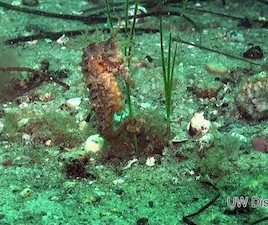
Un hippocampe vu aux larges de la Nouvelle-Écosse
Deux plongeurs ont récemment vu un hippocampe rayé aux larges de la baie de Saint-Margaret en Nouvelle-Écosse. Ils ont téléchargé la photo sur iSeahorse, une application pour téléphone intelligent développé par une équipe internationale d’experts en hippocampes. Cette initiative de science citoyenne est très appréciée des chercheurs puisque seulement 15 chercheurs dans le monde étudient […]

Rare seahorse spotted off Nova Scotia
Two divers recently spotted a lined seahorse (Hippocampus erectus) – rarely seen in Canada – off St. Margaret’s Bay, Nova Scotia. They uploaded the photo to iSeahorse, a smartphone app developed by an international team of seahorse scientists, including UBC marine biologist Amanda Vincent. The ‘citizen science’ initiative is critical due to the fact that […]
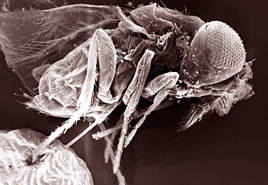
La température influence le sexe d’un insecte parasite
Les évènements climatiques extrêmes pourraient influencer la proportion entre les sexes d’un parasite qui s’attaque à la pyrale du maïs, un ravageur qui s’attaque aux récoltes du Québec. La guêpe parasitique Trichogramma euproctidis pond ses oeufs à l’intérieur de larve de pyrale, tuant ainsi la pyrale dans l’oeuf. Une nouvelle étude montre que moins de […]

Temperature influences gender of parasitic wasp
Extreme climatic events could influence the sex ratio of a parasite that controls pests such as the European corn borer, a new study shows. The parasitic wasp Trichogramma euproctidis lays its eggs inside the eggs of moths, preventing the moth egg from hatching into a caterpillar. The study showed that fewer females were born at […]
